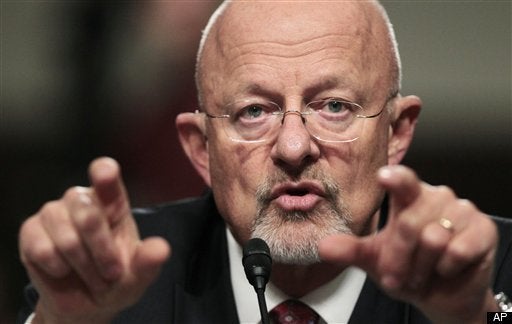
With the appointment of the new Director of National Intelligence (DNI) James R. Clapper, we have a unique opportunity to apply a new approach to conveying national security information to the Commander in Chief. DNI Clapper is often described as the father of Geospatial Intelligence (GEOINT). In an earlier job, DNI Clapper coined the term Geospatial Intelligence, and even renamed and reorganized an intelligence agency around the concept. This was not to establish yet another intelligence "stovepipe", but to provide an integrative framework for all intelligence and operational national security information. Under his watch, it became common to hear every speaker in the national security community say things like "All Actionable Intelligence Exists in Space and Time" -- a truism that has become accepted wisdom by all national security professionals. The map became accepted as the common frame of reference for all national security knowledge.
Recently, there has been lots of press coverage of DNI Clapper's moves to re-organize the ODNI bureaucracy. What has not been covered has been his efforts to re-tool the President's Daily Briefs (PDB) to breathe life into this anachronistic, if not completely moribund medium, to make it more responsive to the President's needs. This was sorely needed. Yet, might I suggest that it is the medium itself that constrains the way in which the President receives intelligence. The PDB -- a thin paper collection of highly vetted and heavily edited intelligence reports -- is the anachronistic means by which the Leader of the Free World achieves situational awareness of the national security risks that face our nation.
The PDB was established by the CIA during President Kennedy's first year in office as a means of conveying foreign intelligence regarding sensitive international situations. While the topics of 1960 were no less important, Presidents and National Security Advisers of yesteryear all agree that the information environment was infinitely less complex, that the pace of change was much slower, and that the number of international (or even non-state) actors that had to be understood was orders of magnitude smaller. A dozen or so briefs delivered once a day might have been sufficient back then, but I believe that this model will fail us in the dynamic and evolving future.
We are at an inflection point in how intelligence could and should be conveyed. We could abandon the outmoded and inadequate PDB framework for informing the President and his national security principals. We could embrace a new metaphor. Not a short paper brief -- but, rather, an interactive digital mapping interface that is integrated into all of the datastores in the national security community. The President's Map. And, we happen to have the right DNI, James R. Clapper, to make this happen.
But wait, there's more. It is not just about how the President and his principals are informed, and how they cognitively integrate national security information. It is fundamentally about how information is shared across the national security community, and achieving a means for transparency and accountability that allows for actual leadership. If information is shareable to the President's Map, according to some known set of technical standards, then it is shareable to anyone else across the national security enterprise that has sufficient security credentials. Finally, we would have a means to demonstrate concrete sharing of information, actually anchored to real-world locations and times. This in itself would be a revolution. It would make complex national security issues much more tractable. This would make many resource shortfalls and resource allocation issues plain as day, and it would empower national security managers to take action based on evidence. In short, it would enable "fact based analysis" which is often a rarity in the national security enterprise. Yes, we would still suffer from some degree of information overload, but at least we would not be under the illusion that a dozen short pages of the PDB constitute a meaningful means of informing the President of the United States.
Perhaps if commentators explored the sheer inadequacy of this means of communicating the complexity of the modern security environment, they would be more effective in identifying potential pathways for the reform and re-invigoration of the US Intelligence Community. More importantly, if only we opened our eyes to obvious alternative metaphors for conveying complex information, perhaps we could not only better inform the President, but also make the Intelligence Community (or even the larger national security enterprise) more effective.
It is time that we evolve with the times, and take advantage of new means of communication within the national security community. It is time that we take steps to launch the President's Map, and move beyond the limitations posed by the President's Daily Brief.